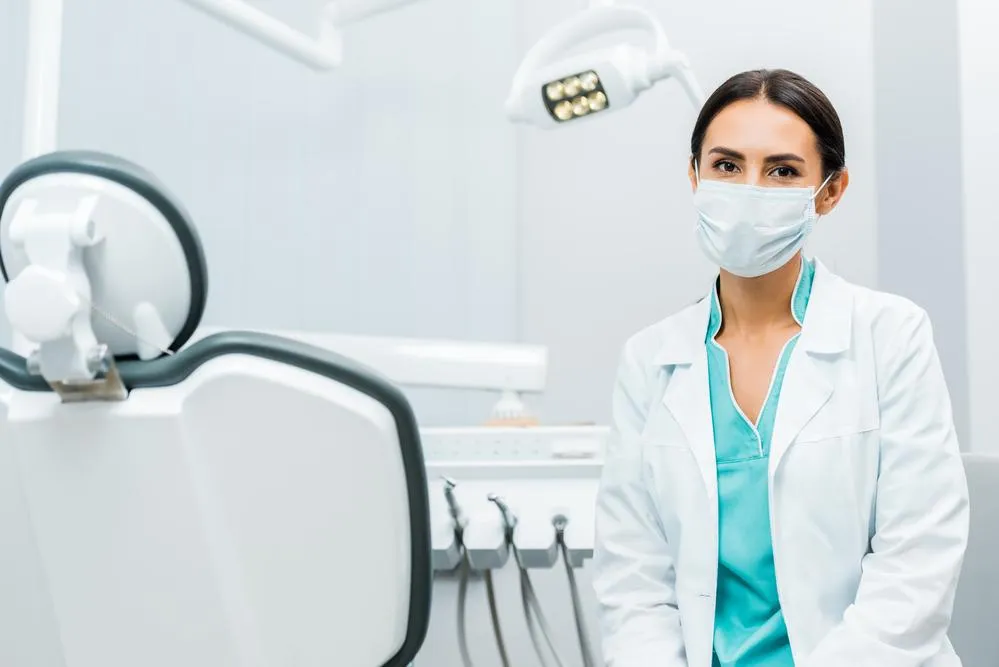
Sign up for our 3 CE Practice Cure On Demand Course
Safe & Simple Treatment of The Anxious Dental Patient

Three Guiding Principles for Successful Treatment of the Anxious Dental Patient
“The ability to perceive or think differently is more important than the knowledge gained.” - David Bohm
Introduction:
If you are a dental professional, chances are you have treated patients who struggle with dental anxiety. If you have, you have likely wondered why they show up the way they do - why is it so hard to work with them? Maybe you have even wondered, what is wrong with them?
This is a common enough response. And I am here to offer an interesting perspective. In nearly 25 years of working as a dental hygienist, I have seen a fair number of anxious dental patients. At one point in my career I treated nearly all the anxious patients who made new patient appointments in our clinic. So, in over 30,000 clinical hours I've made a few observations and some very attitude shifting discoveries based on research around trauma and the Autonomic Nervous System, specifically cranial nerves V - Trigeminal, VII - Facial, IX - Glossopharyngeal, X - Vagus, and XI - Accessory Spinal. I've zoomed in further yet in the last 5 years on the vagus nerve. It's a hot topic today, and for good reason.

With that said, here are 3 guiding principles that might help you to find more ease and confidence in working with anxious dental patients too.
1. It's not what is wrong with them...
It's really more about the way their neurobiology (their nervous system) processed what happened to them in order to keep them safe. If your patient has ever experienced dental treatment trauma, childhood trauma, or if they are currently managing difficult experiences or circumstances, then their nervous system is making heroic efforts to keep everything together. And lying prone in a dental chair, under a near stranger, with their fingers in an intimate space can be very activating.
Think about your cat, or your friend's cat. Will they just let you roll them over and touch their belly, or worse yet let you stick your fingers in their mouth? Nope. A biological imperative tells them that that is unsafe, so they hiss, fight or run off. But we are asking our patients to do it without considering their biology. A person who has an activated fight/flight circuit of the Autonomic Nervous System (ANS) is processing stimuli very differently than someone who is their safe and social circuit (also known as rest and digest, or tend and befriend). Knowing this can help us to cultivate compassion and empathy so that we can gauge what support our patient might benefit from
2. Anxious dental patients are looking for signals of safety
When the fight/flight (sympathetic) circuit of the ANS (which is controlled by cranial nerve X, the vagus nerve)is activated the brain goes to work analyzing one's environment and the people in that environment. The fire alarm of the brain, the amygdala is checking sights, sounds, smells, people's facial expressions, tones of voice and body posture to see if things are potentially unsafe. They may engage in what seem to be unusual behaviors in order to be able to fight or flee a "dangerous" situation.
We can be prepared to provide these signals with our own safe eye contact, vocal prosody, and body positioning and posture to help co regulate their activated ANS. We can create a "comfort menu". This is a kit of tools to have in our clinics such as weighted blankets, noise cancelling headphones, dark glasses, hot/cold packs and high quality, steam distilled essential oils for inhalation or diffusion, that can help us work successfully with our anxious patients.
The fastest way to access the portion of the brain that controls the fight/flight circuit is through inhalation, making essential oils a very powerful tool. Hot or cold packs, based on patient preference, can be placed on the back of the patient's neck or on their chest to send signals of safety to the vagus nerve, and calm it. Noise cancelling headphones and dark glasses reduce external stimuli, helping to reduce your patients sense of overwhelm. Weighted blankets can place weight over the torso to also send signals of safety to the vagus nerve.
Finally, our grounded nervous systems can help our patients co-regulate to a more healthy ANS state. We can use gentle eye contact, smiles that cause the eyes to crinkle and the cheeks to rise (called the duchenne smile), and use a soft more melodic tone when speaking (think of the way a lullaby calms an upset infant). You don't need to sing to your patient, but avoid a monotone in favor of a tone that varies in pace, pitch and volume.
3. Every contact with an anxious patient should be a "disconfirming" experience
Your patient's brain has worked very hard to keep them safe. The fire alarm of the brain, the amygdala (mentioned earlier), has sent information to the hippocampus from the environment. The hippocampus is often referred to as the memory keeper, the story teller of the brain. Every time an anxious dental patient enters the clinic that story teller is reminding them how "dangerous" it is to go to the dentist. The hippocampus then sends that information to the prefrontal cortex. This center is responsible for decision making and impulse control.
If they have been receiving stressful feedback from the other parts of the brain and the body, it's no wonder their behavior seems odd. They've made choices based on bad intel. If we help make their experience less scary and more safe, we help calm the amygdala. This in turn, assists them to store a new memory ("disconfirming" the old story) and write a new story on the hippocampus. The newly attuned hippocampus provides different information to the prefrontal cortex. Now they are more able make different decisions and answer impulses in a way that is more productive.
So what does this mean for you as a provider?
We now know so much more about how to support our patients who struggle with dental anxiety. We have what we need to help their experience (and ours) feel more connected, safe and productive.
This means that regardless of your previous experience working with anxious patients you now can build skills, protocols, and tool kits to care for patients in a whole new way.
I don't know about you, but, I find that exciting and motivational. We can now see patients who access dental care in a relaxed and positive manner become the rule, instead of the exception.
What do we need to do? First things first. Become trauma informed and implement strategies in your clinic to support the anxious patient. The combination of trauma awareness and implementation of protocols of support equals trauma responsive care. We surpass simple knowledge and make a difference that can last a lifetime. Six in 10 of our patients struggle with dental anxiety. If we show up in a proactive and compassionate fashion we can impact a massive population.
Other resources to help you understand nervous system activation and anxiety
Start your own clinic's
trauma responsive checklist:
Here is a quick checklist to get you started with your own practice's trauma responsive protocols Remember imperfect action beats inaction, get started and keep building.
Become Trauma Informed and then Trauma Responsive
Take a CE course on Trauma Responsive Dentistry
Create a list which of your patients may be struggling with dental anxiety
Speak to your team about how to improve the experience of caring for anxious dental patients
Talk with other professionals about how they work with anxious dental patients
Speak to your patients about what might help them feel more at ease and confident in seeking treatment
Create an outline of protocols you would like to implement in your clinic
Design your clinics comfort menu
Build your comfort kit for the clinic, better still have one for each provider to use in their respective operatory.
Keep moving forward your understanding of and empathy for your anxious dental patients
©Trauma Responsive support Services, llc 2021-2025 | ALL RIGHTS RESERVED | Unsubscribe | TERMS & CONDITIONS | Privacy POlicy
